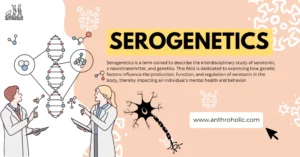AI Answer Evaluation Platform Live Now. Try Free Answer Evaluation Now
Neanderthals (Homo Neandertalensis)
For a long time, Neanderthals were the ultimate punchline-grunting, dim-witted cavemen dragging clubs through the Ice Age. But modern science has completely upended that stereotype. In truth, Homo neanderthalensis were intelligent, adaptable humans who made tools, buried their dead, wore jewelry, and even shared genes with many of us today.
Living across Europe and parts of Asia from about 400,000 to 40,000 years ago, Neanderthals were our closest extinct relatives. They weathered harsh glacial climates, coexisted-and occasionally competed-with early Homo sapiens, and left behind a fossil and genetic record that continues to reshape our understanding of what it means to be human.

Who Were the Neanderthals?
Discovery and Naming
The first recognized Neanderthal fossils were discovered in 1856 in the Neander Valley (or Neandertal) near Düsseldorf, Germany. The species was formally named Homo neanderthalensis in honor of that location.
At first, scientists didn’t know what to make of them-some thought they were diseased modern humans, others saw them as primitive brutes. It wasn’t until the 20th century that paleoanthropologists began to understand that Neanderthals were a distinct human species, closely related to us.
Timeframe and Geographic Range
Neanderthals lived between approximately 400,000 and 40,000 years ago, during the Middle to Late Pleistocene Epoch. Their range spanned:
- Western Europe
- The Middle East
- Parts of Central Asia and Siberia
They evolved in Eurasia and were especially adapted to survive in cold Ice Age environments. Fossils have been found in countries including France, Spain, Croatia, Iraq, and Russia.
Physical Characteristics of Neanderthals
Neanderthals were stocky and strong, built for endurance and warmth. Key traits include:
- Robust bones and heavy musculature
- A large, elongated skull with a prominent brow ridge
- Wide nose (possibly to warm and humidify cold air)
- Shorter limbs than Homo sapiens (reducing heat loss)
- Brain size on par-or slightly larger-than modern humans (~1,400-1,600 cc)
Despite the myths, their large brains and sophisticated tools show they were far from primitive.
How Neanderthals Lived
Tools, Hunting, and Survival Skills
Neanderthals were skilled toolmakers, using the Mousterian tool tradition, which involved:
- Flaking stone into sharp edges
- Crafting scrapers, spear points, and cutting tools
They were big-game hunters, often targeting mammoths, bison, and reindeer. Evidence suggests they:
- Worked in coordinated hunting groups
- Used thrusting spears rather than projectile weapons
- Sometimes scavenged as well as hunted
They also likely used fire, animal hides, and caves for warmth and shelter.
Social Structure and Burial Practices
Neanderthals lived in small, close-knit groups, and there’s growing evidence of:
- Elder care: Fossils show individuals who lived long after debilitating injuries-suggesting they were supported by others.
- Burial of the dead: In sites like Shanidar Cave (Iraq), Neanderthals appear to have intentionally buried individuals, sometimes with flowers or grave goods.
These behaviors hint at empathy, symbolic thinking, and social cohesion.
Art, Language, and Symbolic Behavior
Contrary to outdated beliefs, Neanderthals may have created art:
- Pigment-stained shells and bones
- Cave paintings in Spain dated to before Homo sapiens’ arrival
- Use of red ochre, possibly for body decoration or ritual
Did they speak? Most scientists believe they had basic language abilities, supported by:
- Anatomical evidence (e.g., hyoid bone similar to modern humans)
- FOXP2 gene, associated with speech and found in both Neanderthals and us
Neanderthals may not have been poets, but they were likely capable of symbolic thought and communication.
Neanderthal vs. Homo sapiens: Key Differences and Similarities
Brain Size and Body Shape
Surprisingly, Neanderthals had brains as large-or even slightly larger-than ours (averaging 1,400-1,600 cc). But brain shape differed:
- Neanderthal brains were more elongated, suggesting different structures or emphasis on sensory and motor functions.
- Modern human brains are more globular, associated with enhanced social cognition, planning, and language.
In terms of build:
- Neanderthals were shorter, stockier, and stronger-ideal for conserving heat and surviving rugged terrain.
- Homo sapiens developed a leaner frame, possibly better suited for long-distance endurance and heat regulation in warmer African environments.
Adaptation to Cold Climates
Neanderthals were Ice Age survivors:
- They had large noses to warm air and short limbs to retain body heat.
- Their bones show adaptations for high physical activity, suggesting a very active lifestyle.
Modern humans, by contrast, thrived in a broader range of environments thanks to more diverse tools, clothing, and social structures.
Shared Traits and Overlaps
Despite differences, there were striking similarities:
- Both used fire, tools, and shelters
- Both likely cared for the sick, hunted cooperatively, and lived in social groups
- Both had the capacity for symbolic behavior and emotion
Interbreeding and Neanderthal DNA in Modern Humans
Genetic Discoveries and Evidence of Mating
One of the biggest surprises of the 21st century: Neanderthals and Homo sapiens interbred.
In 2010, scientists sequenced the Neanderthal genome. The results were shocking:
- 1% to 2% of the DNA in modern non-African humans comes from Neanderthals.
- This means interbreeding occurred between the two species, likely around 50,000-60,000 years ago, after Homo sapiens migrated out of Africa.
These weren’t one-time encounters-interbreeding happened repeatedly, especially in Europe and Asia.
What Neanderthal DNA Tells Us Today
The DNA we inherited isn’t just a fossil record-it’s active in our bodies. Neanderthal genes influence:
- Skin and hair color
- Immune system responses
- Fat storage and metabolism
- Even risk for depression, nicotine addiction, and allergies
Some Neanderthal genes likely helped early Homo sapiens adapt to colder climates and new diseases. Others may cause health complications today-evolution is a tradeoff.
How It Affects You
If you’re of European or Asian descent, you likely carry Neanderthal DNA. Genetic testing companies like 23andMe and AncestryDNA can estimate how much.
While this doesn’t make you “part Neanderthal” in any meaningful cultural sense, it does highlight how blended and interconnected our human story really is.
Why Did Neanderthals Go Extinct?
Competition with Homo sapiens
One leading theory is that modern humans outcompeted Neanderthals by:
- Having more complex tools and trade networks
- Living in larger, more connected social groups
- Developing more efficient communication and cultural transmission
This may have given Homo sapiens an edge in survival, food gathering, and mobility.
Climate and Environmental Stressors
The Ice Age presented harsh, fluctuating climates. Neanderthals, already specialized for cold, may have been vulnerable to rapid environmental shifts.
Their small, scattered populations would have struggled with:
- Resource scarcity
- Habitat loss
- Population bottlenecks
The Extinction Mystery: One Reason or Many?
Most experts agree there wasn’t one single cause for Neanderthal extinction. Instead, a combination of:
- Climate change
- Interbreeding and absorption
- Cultural disadvantage
- Epidemic disease brought by Homo sapiens
Rethinking the Neanderthal Legacy
For decades, Neanderthals were misunderstood, cast as crude and less evolved relatives of modern humans. But today, thanks to fossils, tools, burial sites, and especially DNA, we know the truth: Homo neanderthalensis was deeply human.
They braved Ice Age winters, hunted mammoths, made symbolic objects, and even shared their genes with us. They weren’t failed experiments in evolution-they were a successful species that thrived for hundreds of thousands of years, only to disappear under complex and still-debated circumstances.
References
- National Human Genome Research Institute – Neanderthal Genome Sequenced
https://www.genome.gov/27539119/2010-release-complete-neanderthal-genome-sequenced - Smithsonian Institution – Human Origins Program: Neanderthal Overview
https://humanorigins.si.edu/evidence/human-fossils/species/homo-neanderthalensis - ScienceDirect – Climate and Competition in Neanderthal Extinction
https://www.sciencedirect.com/science/article/pii/S0277379120302936 - Cornell University -Effects of Neanderthal DNA in Modern Humans
https://news.cornell.edu/stories/2023/06/lingering-effects-neanderthal-dna-found-modern-humans - Smithsonian Magazine – Did Climate Change Kill the Neanderthals?
https://www.smithsonianmag.com/smart-news/modern-humans-didnt-kill-neanderthals-weather-did-180970167/ - MedlinePlus – What Does It Mean to Have Neanderthal DNA?
https://medlineplus.gov/genetics/understanding/dtcgenetictesting/neanderthaldna/




